Nut and seed butters are popular snack choices on the ketogenic (keto) diet because most nuts and seeds are naturally high in fat and micronutrients.
However, some nuts (and thus, some nut butters) are also high in carbohydrates, which means you risk getting kicked out of ketosis if you overindulge in them.
Additionally, most nuts and seeds contain inflammatory omega-6 fatty acids and mineral-absorbing antinutrients. I wrote about the pros and cons of nuts and seeds for keto in a separate article, and I encourage you to check that out since much of the information also applies to nut and seed butters.
To avoid comparing apples to oranges, I’ve split this article into three different sections, including:
- Best three keto nut butter blends (products made specifically for low-carb diets).
- Best 10 classic nut butters (i.e., plain almond butter).
- Best seed butter.
Additionally, I’ll show you how to make your own nut butter using a high-speed blender.
How Nut Butters Are Made
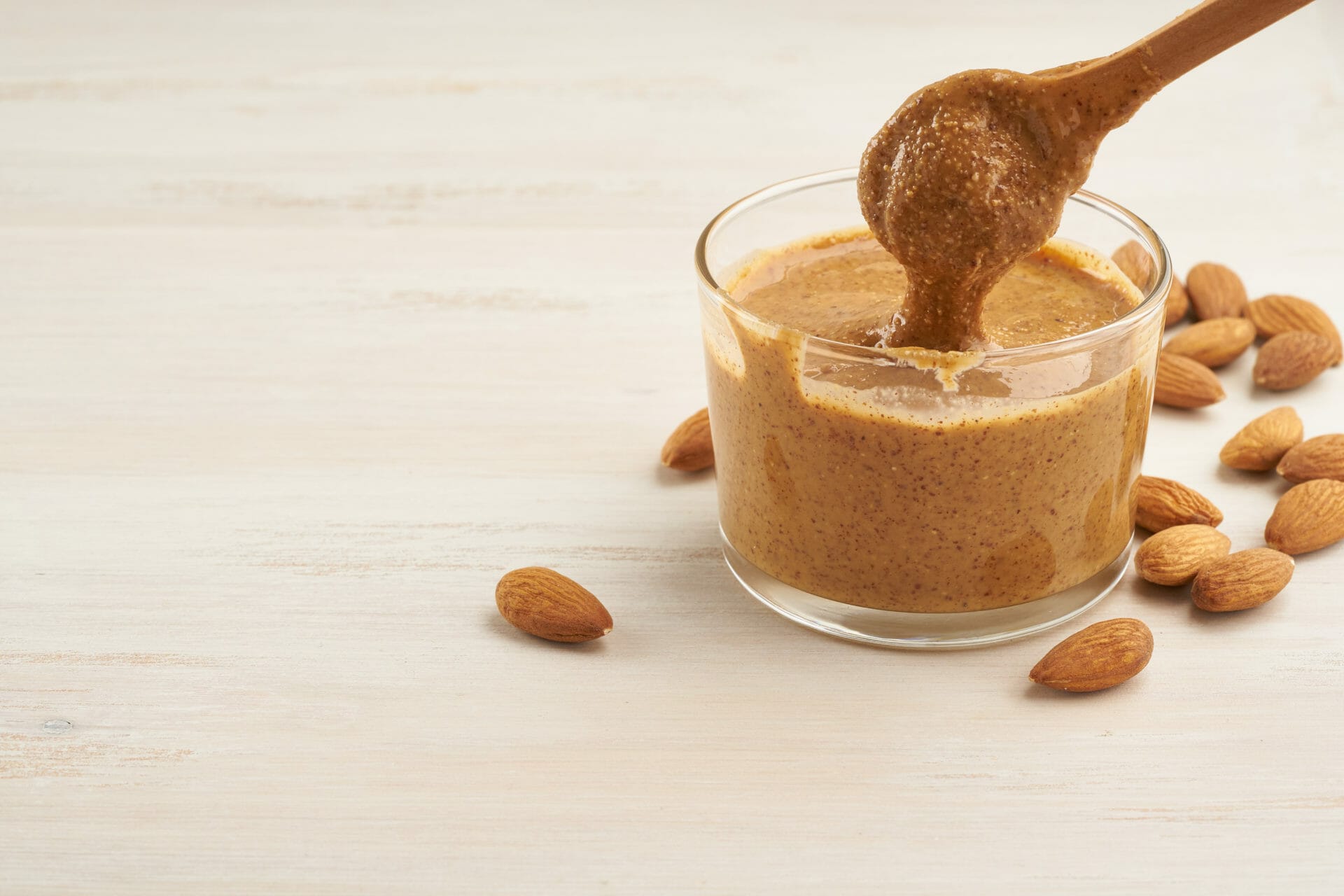
Manufacturers make nut butters by grinding roasted nuts into a creamy paste. Sometimes they add extra oil for a creamier texture.
If you’re looking for traditional nut butters as opposed to blends made specifically for keto dieters, I’d go with products that contain only a single ingredient: roasted nuts.
The alternative is nut butters from a mix of different nuts, paired with additional keto-friendly ingredients like MCT oil, non-caloric sweeteners, probiotics and more.
How Do You Make Nut Butter at Home?
Depending on how much control you want to have over the final product, you can either buy roasted nuts and then grind them in a high-speed blender or food processor (such as a Vitamix), or you can buy raw nuts and roast them yourself.
I don’t have the time to roast nuts myself. So, in the past, we purchased roasted nuts and then simply threw them into our Vitamix for a few minutes. Depending on how thick you want your nut butter to be, you can also add some coconut oil to get a creamier texture.
Is Nut Butter Keto-Diet-Friendly?
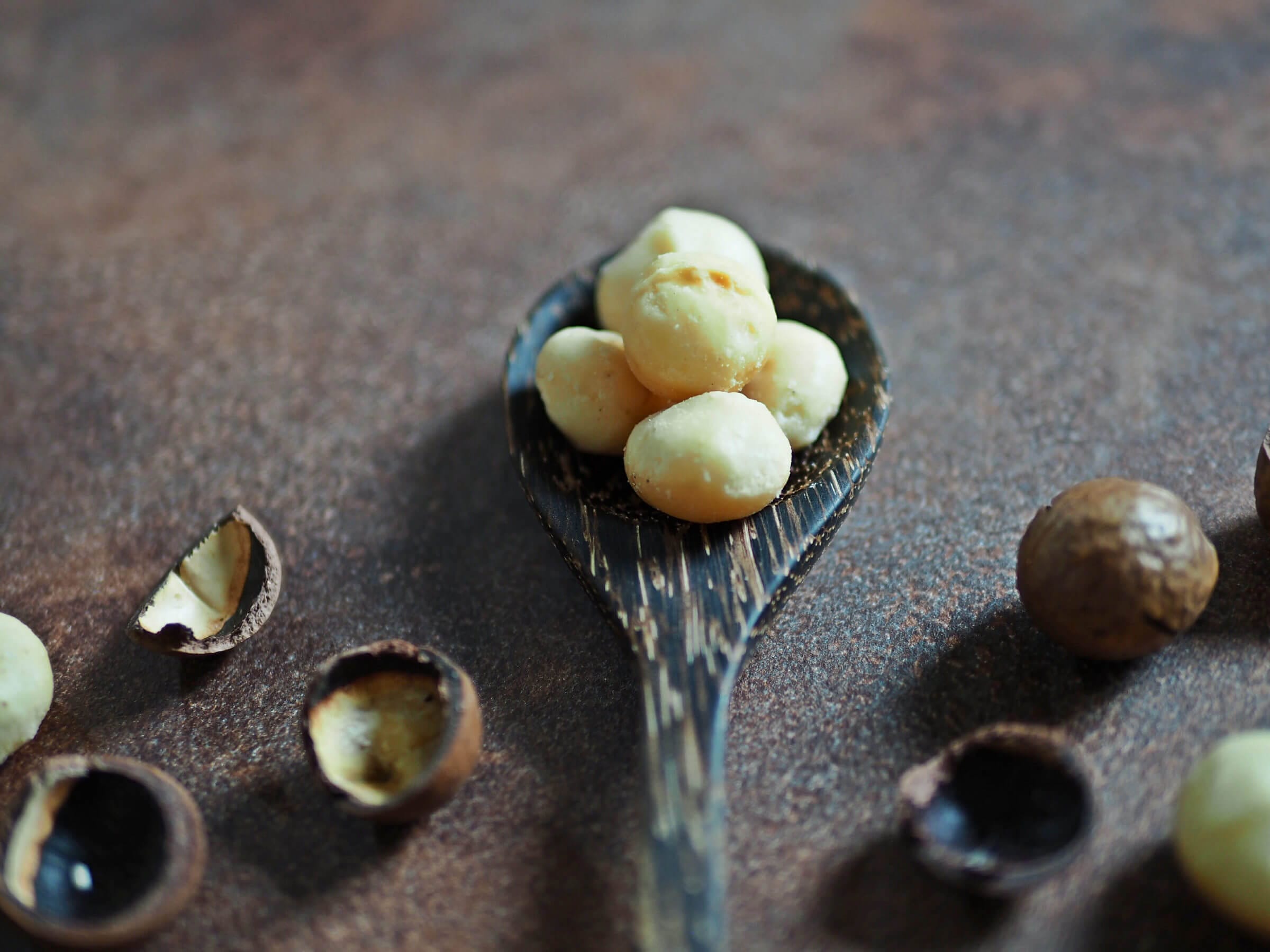
Many keto dieters associate nuts and seeds with fat. And while it’s true that most nuts and seeds have high amounts of fat, many also have a lot of carbs. The latter gets converted into glucose by your liver, which might kick you out of ketosis.
As a result, the general rule of thumb is to consume nuts and seeds (and their butters) in moderation. Of course, some nuts and seed butters — such as macadamia nut or sacha inchi seed butter — are relatively low in carbs, and you can have more of them without risking cycling out of ketosis.
In addition to accounting for the carbs that come from nut butter’s primary ingredient (nuts), it’s important to make sure the product doesn’t contain any other types of carb sources. In other words, stay away from peanut butter and jelly.
Added sugar and other caloric sweeteners are a common culprit that can turn an otherwise low-carb product into an insulin-spiking nightmare.
The problem with sugar is that it comes in so many different shapes and forms that it’s easy to miss it, even if you carefully check the ingredients list. That’s why I recommend avoiding products that have ingredients you don’t know or don’t have the time to research.
Sometimes, you’ll see oil on the ingredient list. That oil is there to make the nut butter creamier, and you should be OK as long as it’s not a vegetable or hydrogenated oil.
Does “Keto” Equal “Healthy?”
While the ketogenic diet is arguably a healthy dietary lifestyle, not every food that’s keto or keto-friendly is unconditionally healthy.
You can eat unhealthy food and stay in ketosis just like you can eat paleo-friendly food and maintain high blood sugar levels.
That’s why I’m an advocate of pursuing a Paleolithic ketogenic diet that combines the best of both worlds.
As far as nuts and nut butters are concerned, it’s important to understand that the macronutrient split (fat vs. carbs) isn’t the only factor you should pay attention to.
As I explained in my article about the best nuts and seeds for keto, you also have to understand that some of the fats (or fatty acids, such as omega-6) in nuts and seeds are highly inflammatory.
Additionally, most nuts, seeds and legumes are rich sources of antinutrients that can bind to positively-charged minerals, such as calcium, cobalt, chromium, copper, iron, magnesium, manganese, molybdenum (as molybdate), potassium, selenium (as selenate), sodium and zinc, and prevent your body from absorbing them.
Top 10 Traditional Nut Butters For Keto
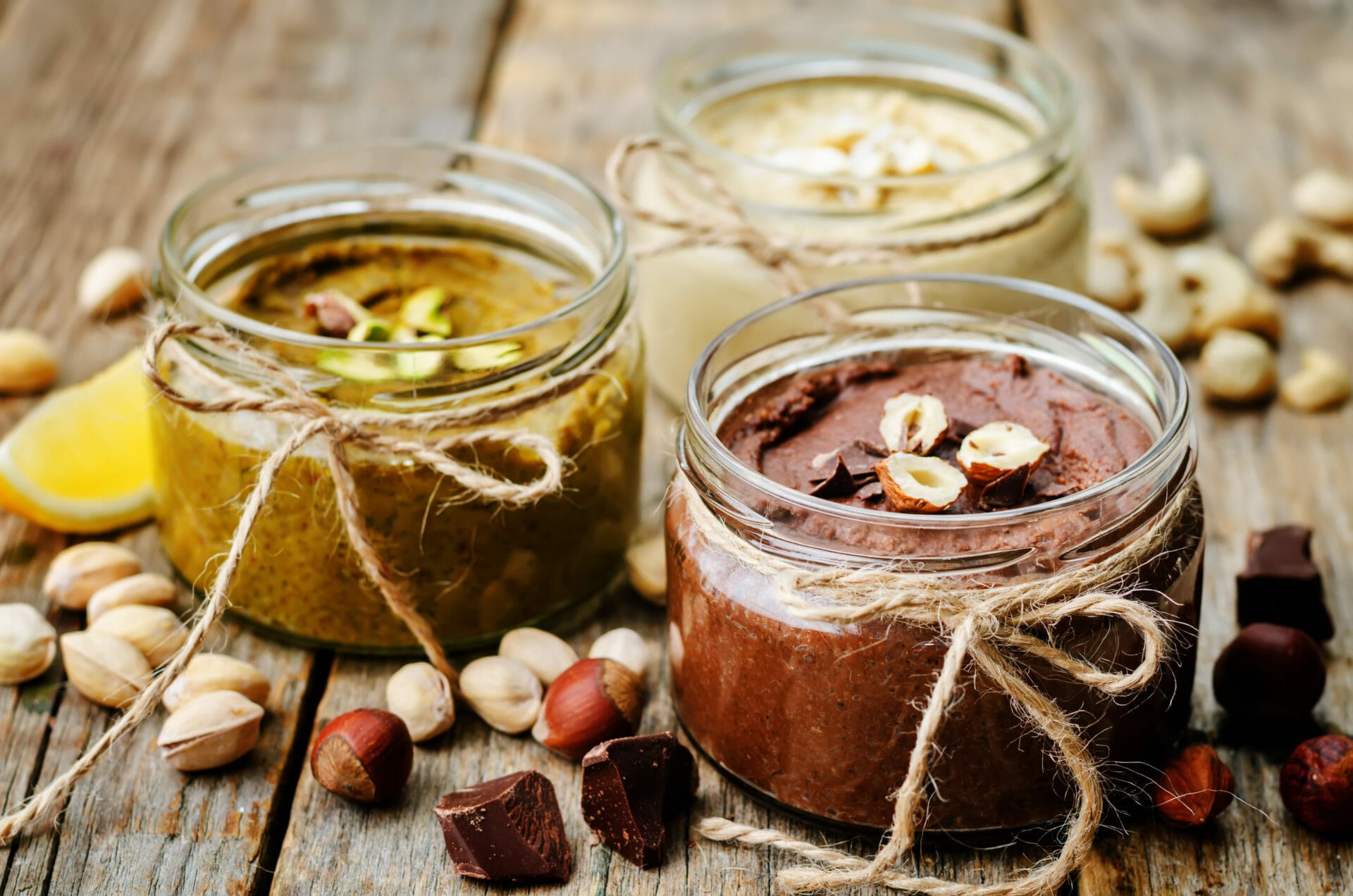
If you’re not a fan of nut butter blends specifically made for a ketogenic lifestyle, and would rather indulge in traditional nut butters like the ones you can find in most grocery stores, I’ve got you covered.
Below, you’ll find a list of the best traditional nut butters for keto based on the following characteristics:
- Net carb content: the fewer net carbs, the better.
- Omega-6 to omega-3 ratio: the closer the ratio is to 1:4, the better.
- PUFA content: a higher omega-6:3 ratio might be less of a problem if the nut butter doesn’t have a lot of omegas in the first place.
When I first started writing this article I ranked the nut butters based on their net carb content, which you can calculate by subtracting fiber and other non-caloric carbs (such as non-caloric sweeteners) from the total amount of carbs.
The distinction between carbs and net carbs is important because consuming non-caloric carbs (such as fiber) does not raise your blood sugar level (and thus does not trigger an insulin response).
However, carbs are not the only thing you should think about when deciding what to eat. So I decided to account for additional ranking factors and consider the overall health profile of the nuts and their fatty acid composition.
After doing so, my top keto nut butter list changed significantly. That serves a good reminder that, as I wrote earlier in this article, keto-friendly doesn’t necessarily mean healthy.
- Macadamia nut butter
- Coconut butter (not what you might have expected)
- Pili nut butter
- Pecan butter
- Hazelnut butter
- Almond nut butter
- Walnut butter
- Brazil nut butter
- Pistachio nut butter
- Cashew nut butter
- Peanut butter
In a nutshell (pun intended), the only nut butters you should enjoy in substantial amounts are those made from macadamias, coconuts and pili nuts.
That’s because those three nuts have relatively low amounts of carbohydrates and either favorable omega-6 to omega-3 ratios or low amounts of omega-6.
Unfortunately, macadamia nut butter is expensive and hard to come by, while coconut butter is better suited for cooking and baking as it doesn’t taste like butter made from other types of nuts.
That leaves you with pili nut butter, which tastes great and won’t kick you out of ketosis.
With the exception of peanut butter, you should enjoy all the other nut butters (marked in orange above) only in moderation to reduce the impact on your blood sugar (and to reduce the risk of inflammation).
If you’re wondering why peanut butter is marked in red and comes in last on the list, continue reading to find out.
So now that you understand how I came up with my rankings — which might look entirely different from what you’ve seen on other sites — let’s dive into the details of each nut butter.
1. Macadamia Nut Butter
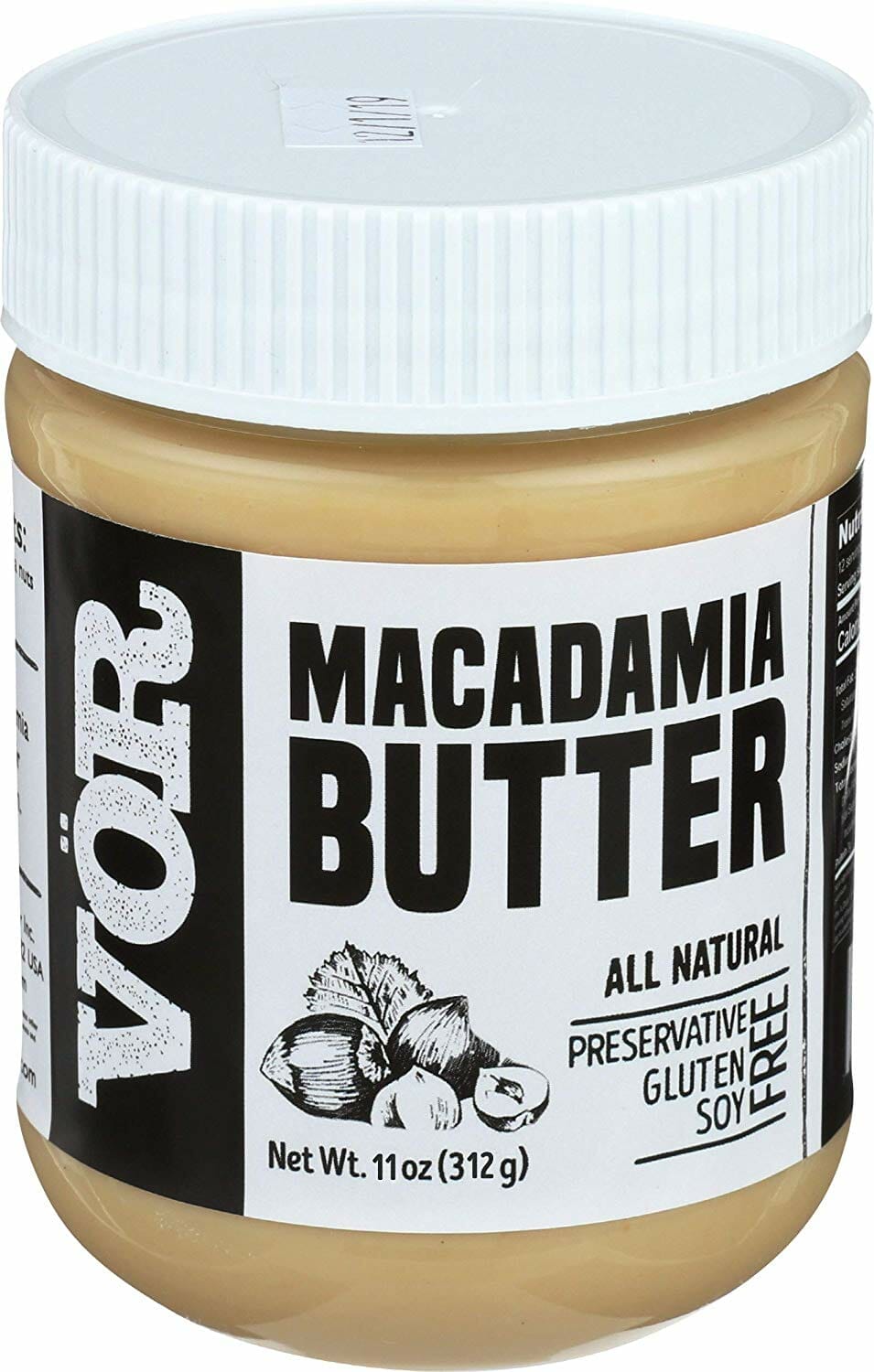
- High in monounsaturated fat
- Low in carbs
- Good omega-6:3 ratio of 6:1
- Low in PUFAs
- Expensive
Macadamias are indigenous to Australia and are arguably the king of nuts. Besides their high fat and low carb content, they’re packed with iron, magnesium and potassium.
As a result, they make excellent keto-friendly nut butter and they’re often used in nut butter blends.
Considering the high price of macadamias, pure macadamia nut butter isn’t incredibly popular. I couldn’t even find it at my local Whole Foods. However, you can find a handful of brands, including Vör, on Amazon.
Find Vör Macadamia Nut Butter on Amazon
2. Coconut Butter (Coconut Manna)
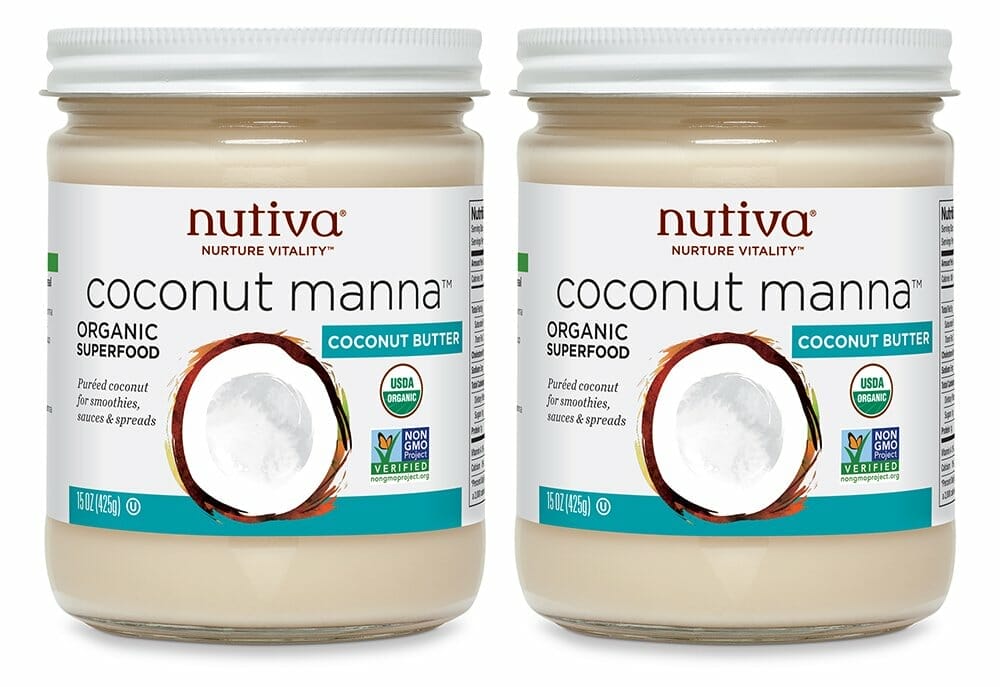
- High in saturated fat and MCTs
- Low in carbs
- Low in polyunsaturated fat
- Doesn’t taste like traditional nut butter
Coconut products are wildly popular in keto circles because coconut fat is rich in medium-chain triglycerides (MCTs), a form of saturated fatty acids.
MCTs, and caprylic acid (C8) in particular, are excellent fuel sources because the liver can quickly convert them into ketones.
Coconut fat and coconut butter have gotten a bad rap because of their high omega-6:3 ratio of 102:1. However, what many people don’t know is that coconut fat has very little PUFAs (about 0.1 gram per 28 grams).
That makes coconut butter an excellent and healthy nut butter for a ketogenic diet. The only potential downside of coconut butter (also known as coconut manna) is that it doesn’t taste like traditional nut butters.
As a result, most people use it for baking and cooking instead of just spooning it.
The brands of coconut butter I like best is Nutiva.
3. Pili Nut Butter
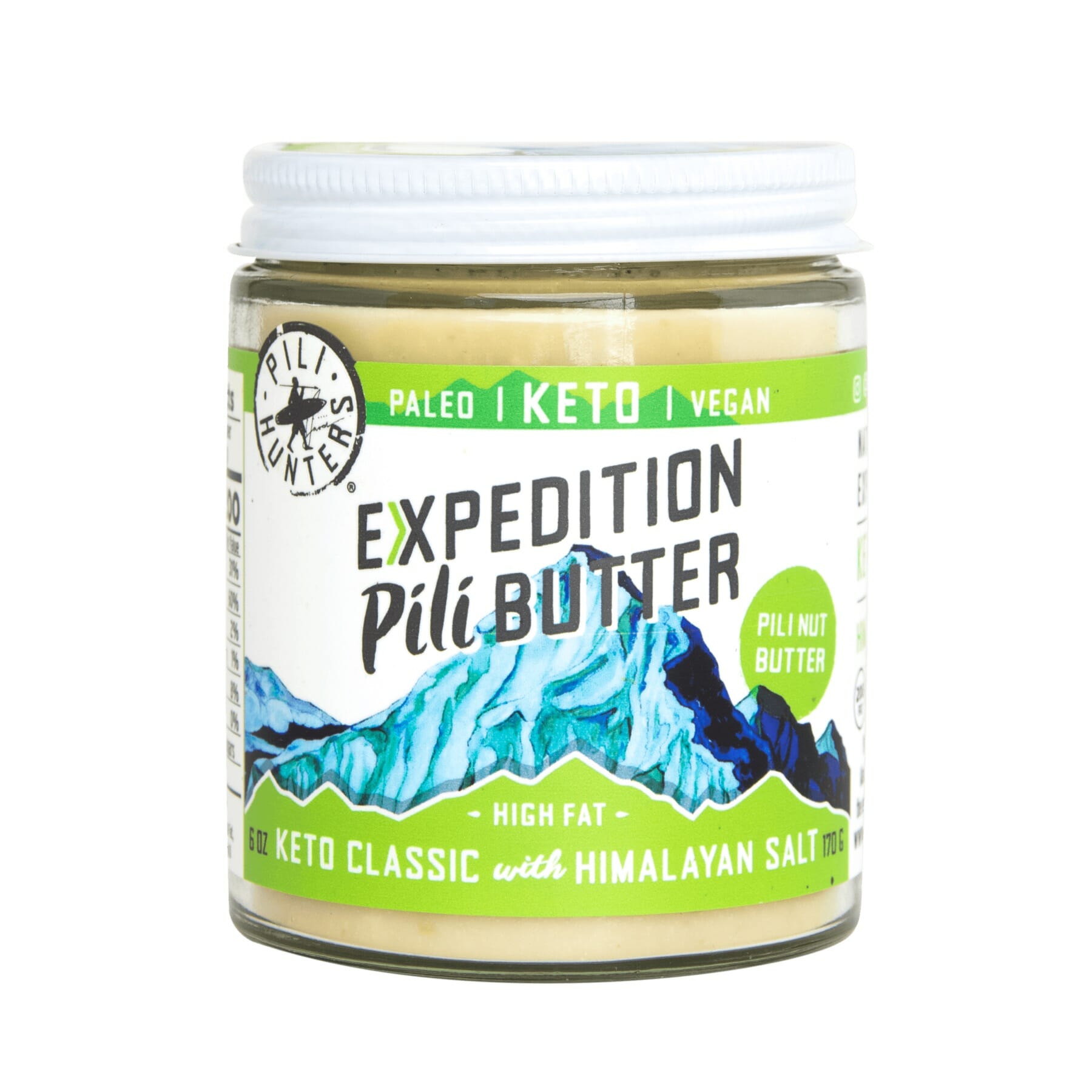
- High in monounsaturated fat
- Low in carbs
- Low in polyunsaturated fat
- 18:1 omega-6:3 ratio
Chances are that you’ve never heard of pili nuts, unless you’ve been on keto for a while. I didn’t learn about pili nuts and the delicious pili nut butter until I attended the Paleo f(x) tradeshow in 2019.
What’s so incredible about pili nut butter is that it contains only 1.1 grams of carbs but 22.3 grams of fat. That means a whopping 93% of the calories in this nut butter come from fat (mostly saturated and monounsaturated fat).
The only reason why pili nut butter ranks below macadamia and coconut butter is because of its higher omega-6 to omega-3 ratio.
My favorite brand of pili nut butter is Pili Hunters, and you can check out all the different flavors they offer here.
I like their classic version best, which contains only wild-harvested pili nuts, coconut manna, organic extra virgin coconut oil and organic Himalayan salt.
4. Pecan Butter
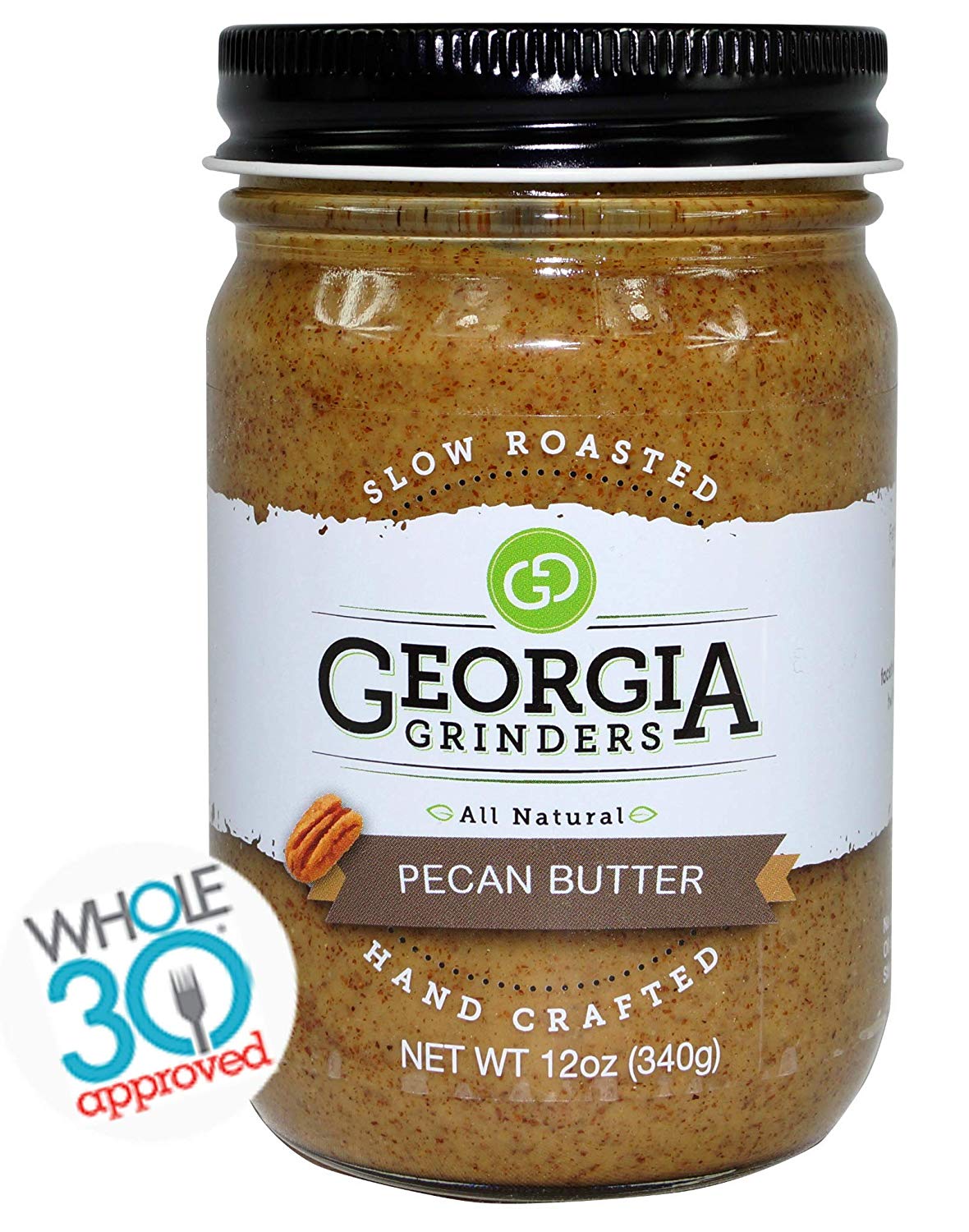
- High in monounsaturated fat
- Very low in carbs
- Omega-6:3 ratio of 20:1
- Higher in PUFAs
Pecan nut butter is also relatively low in carbohydrates and high in fat, making it an almost perfect keto option.
The downside of pecan nut butter is that it has a higher omega-6 to omega-3 fatty acid ratio of 20:1.
On the bright side, pecan nut butter is a rich source of micronutrients, including B vitamins, copper, manganese, magnesium, phosphorus and zinc.
My favorite brand is Georgia Grinders.
Find Georgia Grinders on Amazon
5. Hazelnut Butter
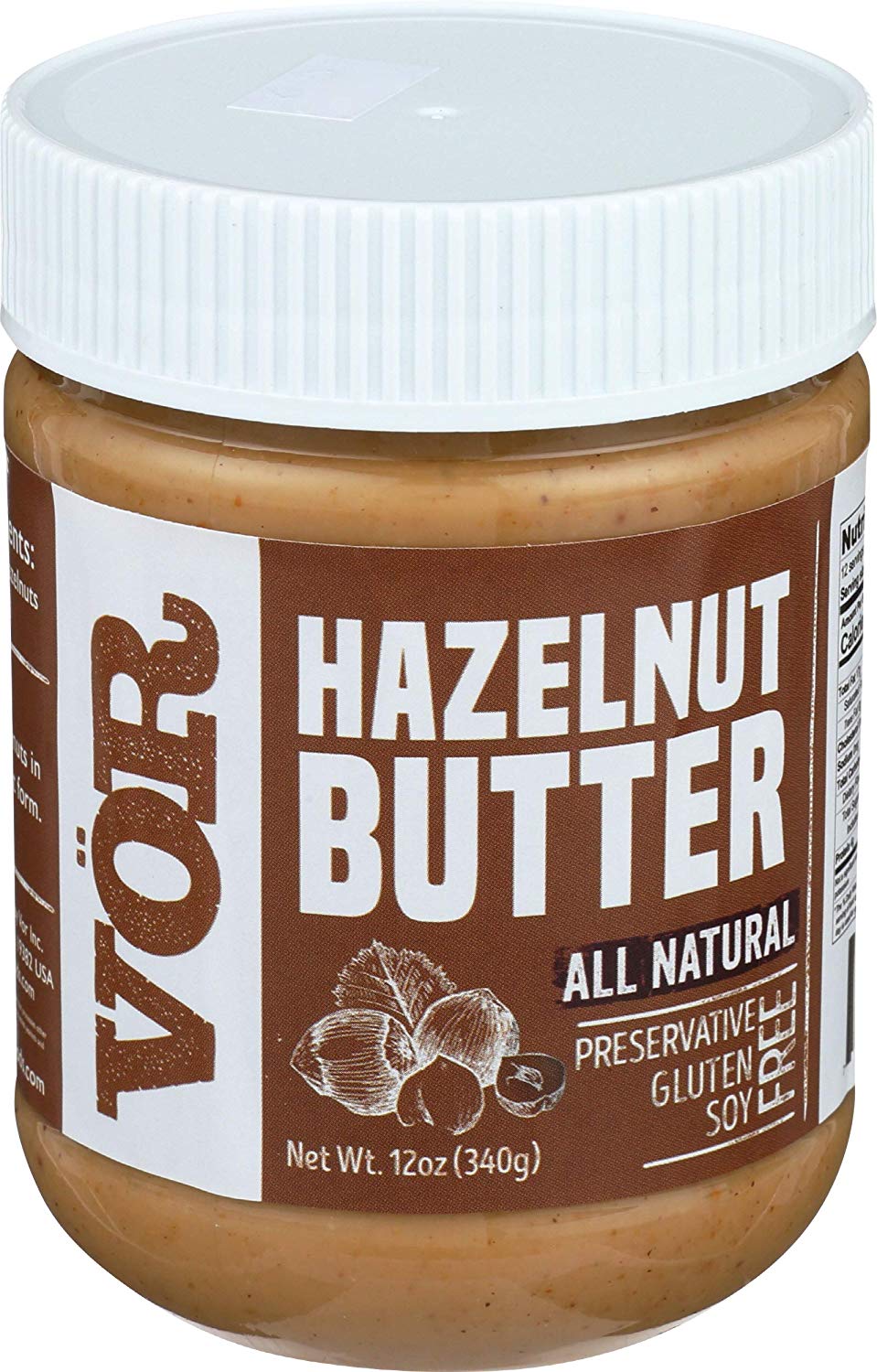
- Rich in monounsaturated fat
- Low in carbs
- Pleasant taste
- Omega-6:3 ratio of 90:1
- Moderately high in omega-6 fatty acids
Growing up as a kid in Austria, we ate a lot of hazelnuts (especially around Christmas). But once I got a little older, I went almost 20 years without having any.
In 2019, I got a jar of hazelnut butter from Georgia Grinders and it brought back fond childhood memories.
Like most nut butters, hazelnut butter is a good source of minerals and some B vitamins. It’s also very low in carbohydrates (with only two grams per ounce), and it’s high in monounsaturated fatty acids. That’s probably one of the reasons why Perfect Keto uses hazelnut butter in one of its blends.
However, while the omega-6:3 ratio is moderately high (90:1), hazelnut butter has less than 2.2 grams of linoleic acid per ounce. That makes it an excellent and arguably healthier alternative to the more popular almond nut butter.
My favorite brands of hazelnut butter include Vör and Georgia Grinders.
Find Vör Hazelnut Butter on Amazon
6. Almond Nut Butter
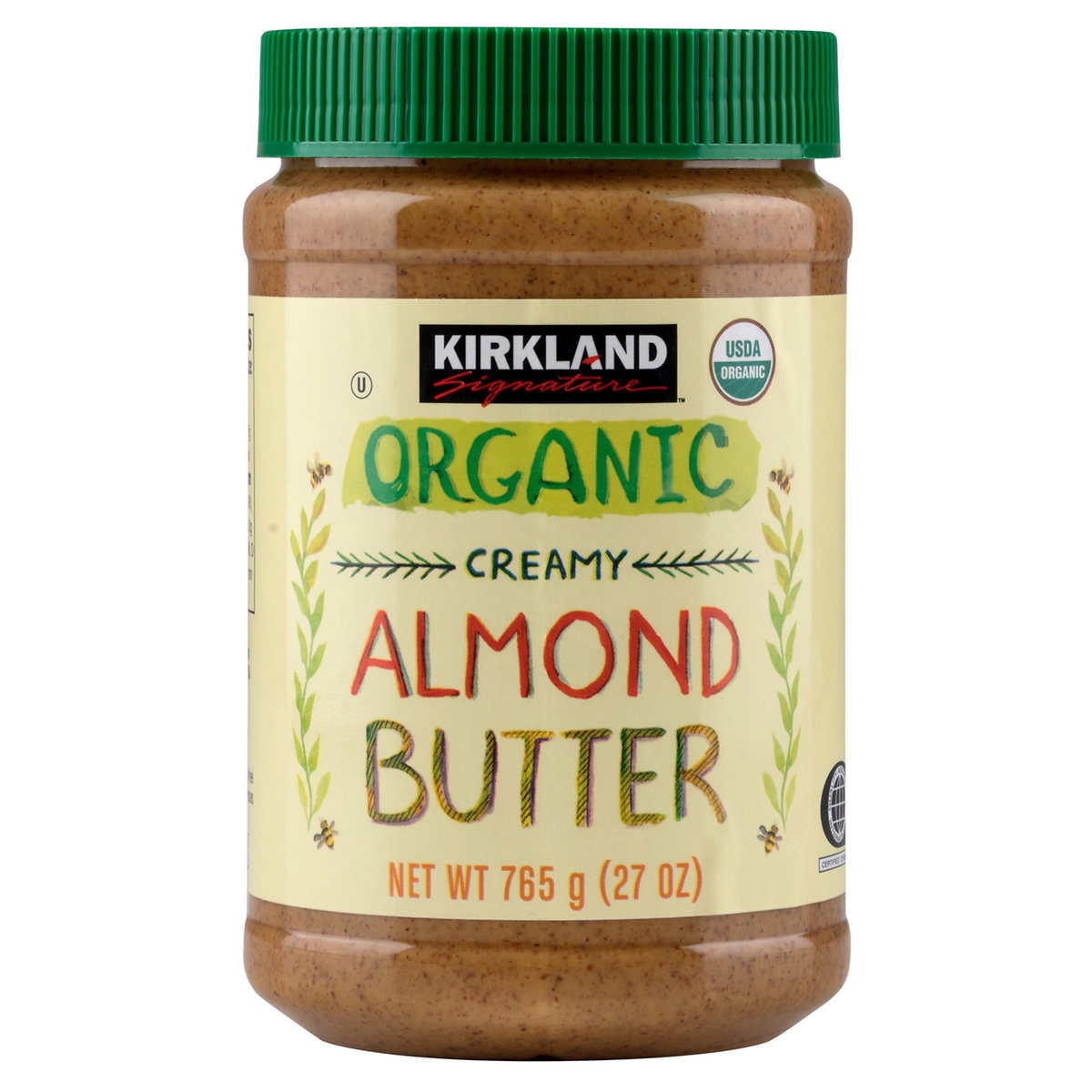
- Inexpensive
- Relatively low in carbs
- High omega-6:3 ratio of 1987:1
- Moderately high in omega-6 fatty acids
Almonds are the most popular tree nut in the United States. In 2016, Americans consumed an average of 1.6 pounds of almonds, up from .25 pounds in 1970. By comparison, the total tree nut consumption in 2016 was 3.69 pounds per person.
Because of the enormous demand for almonds, their butter is relatively inexpensive (which further contributes to their popularity).
From a dietary perspective, almond nut butter is higher in carbs than some of the other nut butters I’ve discussed in this article.
The major disadvantage of almond nut butter is its incredibly high omega-6:3 ratio of 1987:1. My recommendation is to avoid pure almond butter and instead go with mixed butters, such as the ones sold by Perfect Keto or Super Fat.
7. Walnut Butter
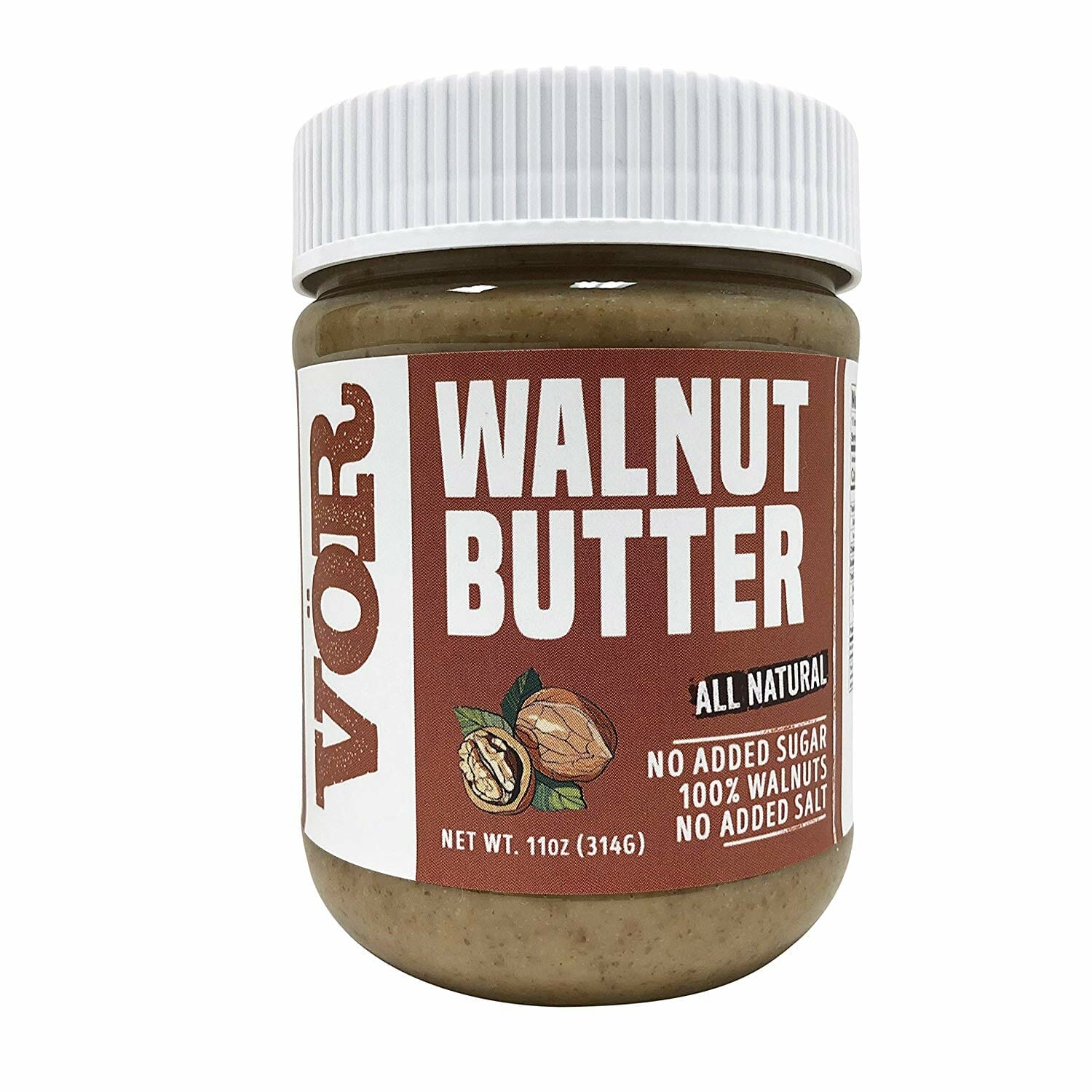
- High in antioxidants
- Low in carbs
- Omega-6:3 ratio of 16:1
- Very high in omega-6 fatty acids
Walnut butter is relatively low in carbs, with 84% of the energy it provides coming from fat.
Walnut butter is also a good, albeit not great, source of micronutrients like potassium, magnesium and vitamin B6.
The primary downside to walnut butter is its higher omega-6 to omega-3 ratio, combined with its incredibly high amounts of linoleic acid.
On the bright side, walnut butter is also a rich source of antioxidants that provide some protection for those unstable polyunsaturated fatty acids.
I don’t think there’s a lot of demand for pure walnut butter, considering the lack of options on the market. If you’d like to give walnut butter a try, consider making it yourself or going with Vör on Amazon.
Find Vör Walnut Butter on Amazon
8. Brazil Nut Butter
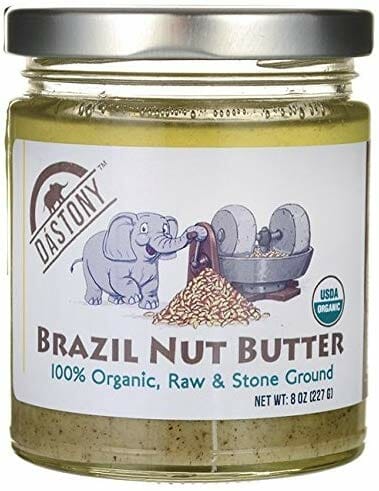
- Good source of magnesium
- Omega-6:3 ratio of 1000:1
- Moderately high in omega-6 fatty acids
Much like walnut butter, Brazil nut butter consists mostly of unsaturated fats (which makes it prone to rancidity and oxidation). It also has an unfavorable omega-6:3 ratio of 1000:1.
As a result, I usually stay away from Brazil nut butter. In fact, I don’t think I’ve ever had any.
Much like some of the other more exotic nut butters, Brazil nut butter isn’t incredibly popular. One of the few options I’ve seen on Amazon is from Dastony.
Find Dastony Brazil Nut Butter on Amazon
9. Pistachio Nut Butter
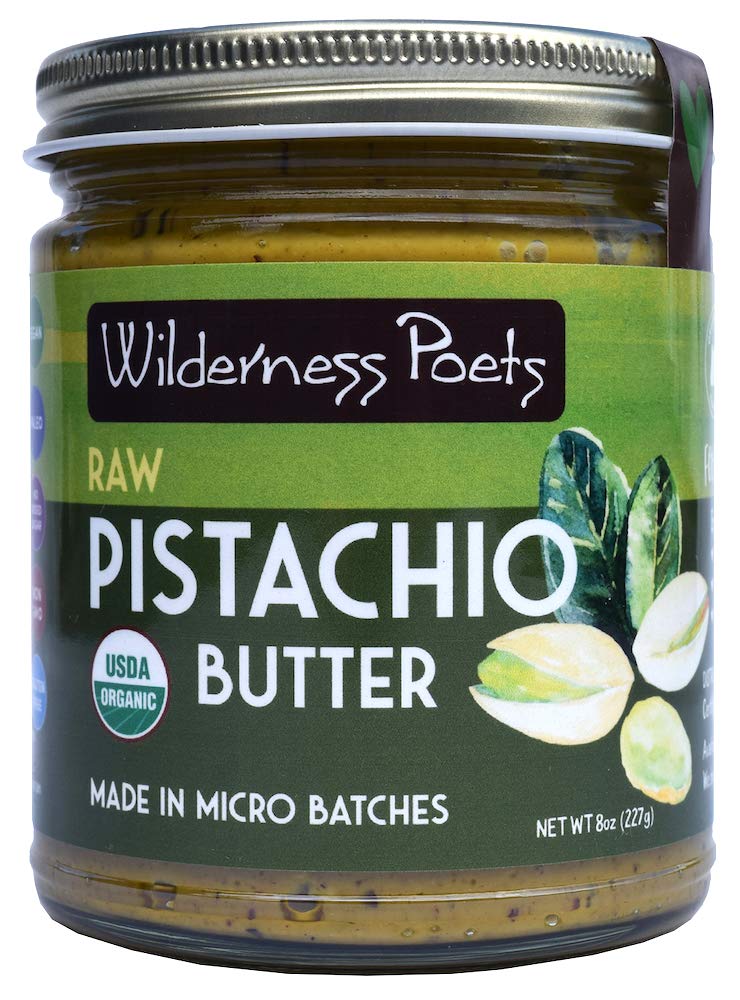
- Distinct taste
- Moderately high in carbs
- Omega-6:3 ratio of 52:1
While pistachio nut butter has fewer net carbs than cashew nut butter, it’s still not a great choice for keto because overindulging in it can certainly kick you out of ketosis.
On the bright side, pistachio nut butter has a lower omega-6:3 ratio than many other nut butters and most of its fat comes from monounsaturated fatty acids.
I don’t think I’ve ever tried pistachio nut butter, but I found one on Amazon by Wilderness Poets.
Find Wilderness Poets on Amazon
10. Cashew Nut Butter
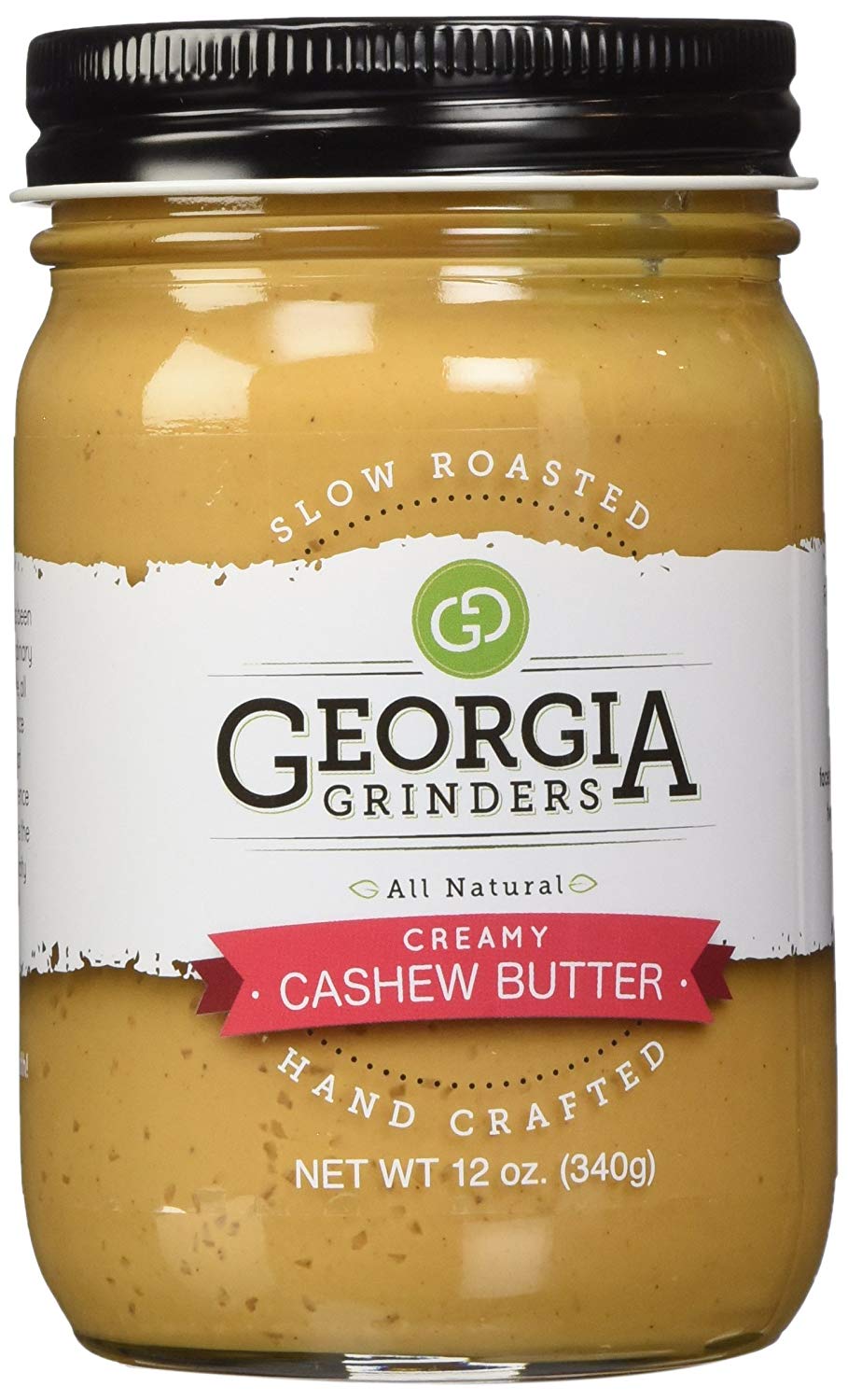
- Delicious taste and creamy texture
- Lower amount of polyunsaturated fatty acids
- High in carbs
- Omega-6:3 ratio of 125:1
Many people like cashew nut butter because it tastes sweet. The primary reason why it’s so sweet is because of the relatively high sugar content in the nuts.
The carbs in cashew nut butter make it less than ideal for someone following a ketogenic diet, because consuming only two to three ounces can kick you out of ketosis.
Besides the carb issue, cashew nut butter also has a higher omega-6:3 ratio of 125:1. However, unlike walnut and Brazil nut butter, most of the fat in cashews comes from monounsaturated fatty acids.
If you walk through the aisles of your local Whole Foods store, or go to Amazon, you can find numerous brands of cashew butter. Our favorite is Georgia Grinders, and you can find their products both in store and online.
Find Georgia Grinders on Amazon
Why You Should Avoid Peanut Butter
If you’ve read this far, you’re probably wondering why I haven’t talked about peanut butter yet.
First and foremost, peanuts aren’t nuts. So they technically shouldn’t be lumped in with nut butters. But that’s not the real reason I omitted it.
While having a few spoons of peanut butter every now and then won’t kill you, it’s worth understanding that peanuts aren’t healthy for the following reasons.
Peanuts are naturally covered in a poisonous and carcinogenic mold called aflatoxins. Since there’s nothing growers can do to prevent aflatoxin contamination, the FDA introduced “safe limits.”
But that’s like saying that one cigarette a day won’t kill you. Maybe not tomorrow, but over time, it’ll damage your lungs.
The second issue with peanut butter is its omega-6:3 ratio of 5444:1 — the highest of any “nut” butter.
Also, I shouldn’t have to say this, but…
Peanut butter and jelly is not a keto-friendly food.
But even without the jelly, make sure you carefully read the label when you buy peanut butter because most brands add sugar, which might kick you out of ketosis in an instant.
Best Seed Butter For Keto
As I’m sure you’ve realized by now, picking the right nut butter is tricky given the various aspects to consider beyond carbs vs. fat.
The good news is there’s an alternative to nut butter that most people haven’t even heard of. It’s called sacha inchi, and it’s a seed native to the Amazon rainforest highlands.
1. Sacha Inchi Seed Butter
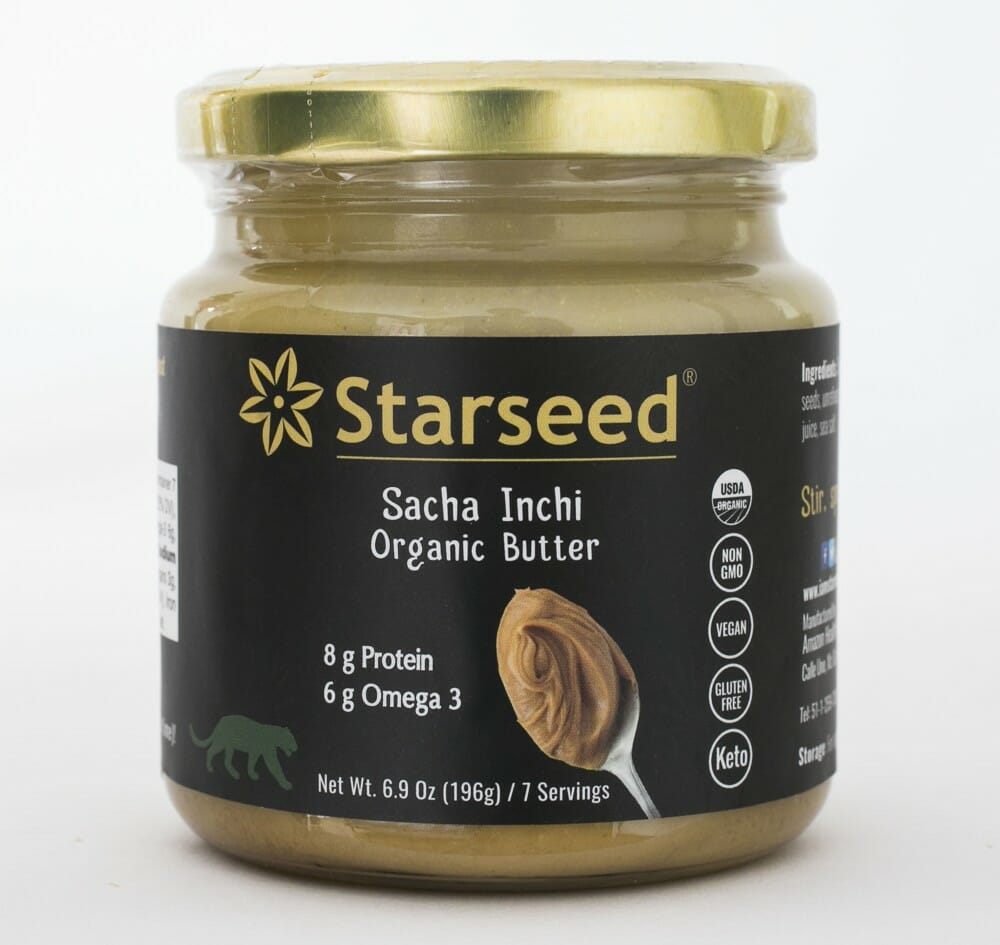
I first learned about sacha inchi — also known as star seed — when I attended the 2019 Paleo f(x) convention.
What’s so incredible about sacha inchi is their impressive omega-6:3 ratio of 0.7:1. That’s right — sacha inchi has more omega-3s than omega-6s.
What’s more, butter made from the seeds has zero grams of net carbs, making it the perfect keto nut butter alternative on the market.
Starseed, the company promoting and importing sacha inchi, makes delicious seed butter that I can highly recommend.
We tested a bunch of their products and the kids and I loved the taste, so check it out.
Why You Should Avoid Most Other Seed Butters
With the exception of sacha inchi seeds, most regular seed butters (i.e., sunflower seed butter) are incredibly high in omega-6 fatty acids.
If you have to have them, consume them only in moderation and don’t empty a full jar just because of their lower carb content.
Wrap-Up: The Best Nut Butters For Keto
Most nut butters are excellent sources of fat and are relatively low in carbohydrates. Those two attributes make them a favorite food among people who follow a ketogenic diet.
However, now that you know more about fat, and about polyunsaturated fatty acids (such as omega-6) in particular, you also understand that not all fats are created equal.
Specifically, it’s important to maintain a balance between linoleic acid (omega-6) and alpha-linolenic acid (omega-3) to reduce systematic inflammation in your body and thus decrease the chances of developing a chronic disease.
If you follow a diet that includes a lot foods that are rich in omega-3, such as fatty fish (mackerel, sardines, salmon, etc.), occasionally indulging in nut butter as a snack isn’t an issue.
However, if you overdo it and go through a jar of nut butter every day with your afternoon coffee, you not only risk getting kicked out of ketosis, you also increase your long-term risk of developing a metabolic disease.
Also, keep in mind that nut butter is relatively satiating thanks to its high fat content. If you eat too much of it, you might eat less of healthier sources of food like pastured meat and wild-caught fish.
So keep enjoying nut butter in moderation and let me know what your favorite nut butter is by leaving a comment below.

Michael Kummer is a healthy living enthusiast and CrossFit athlete whose goal is to help people achieve optimal health by bridging the gap between ancestral living and the demands of modern society.

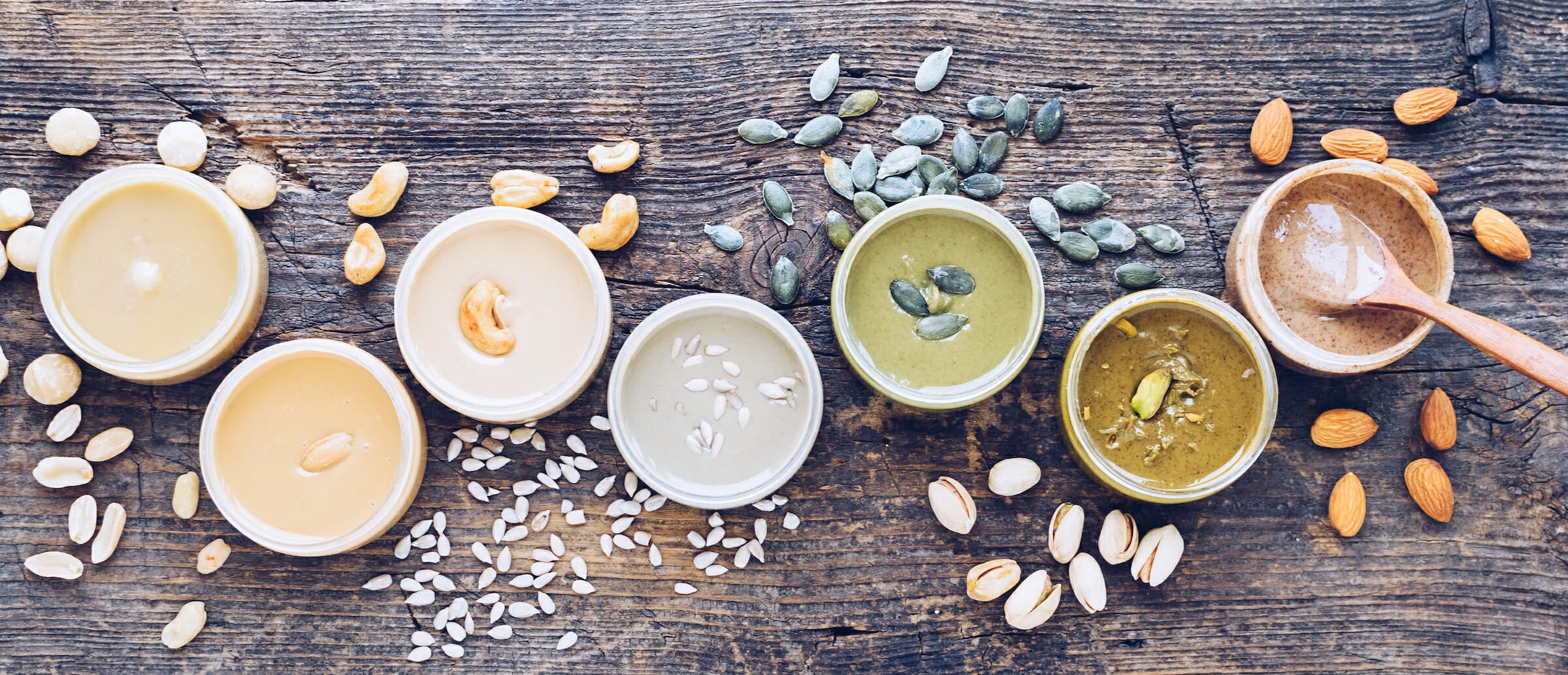

I love nut butters. I can eat coconut butter a lot, I use organic coconut in my garden to prepare it, earlier my favourite was peanut butter, I gave up eating it unwillingly after reading ur very useful article, thank you very much!